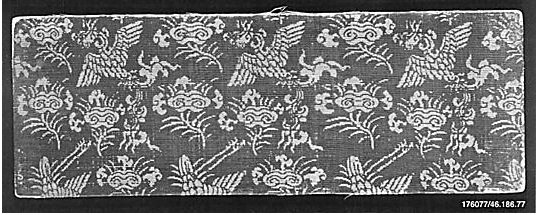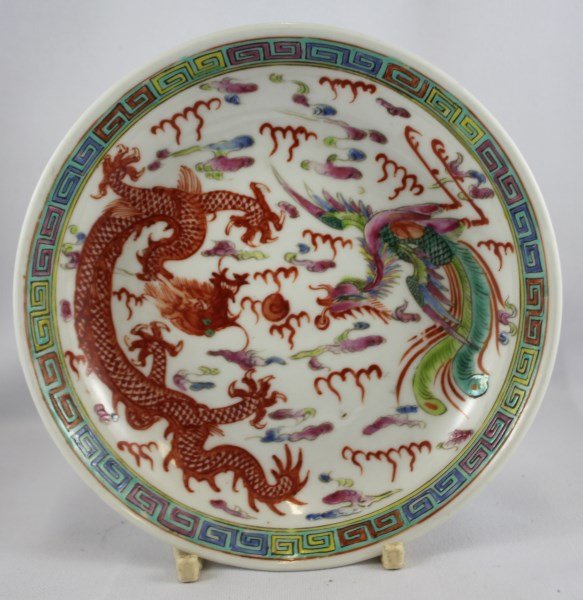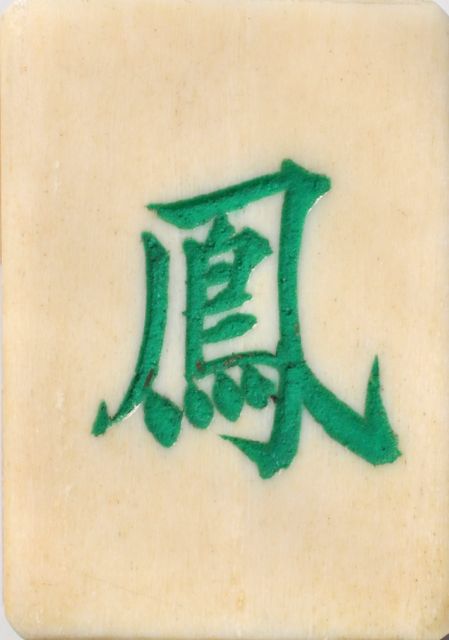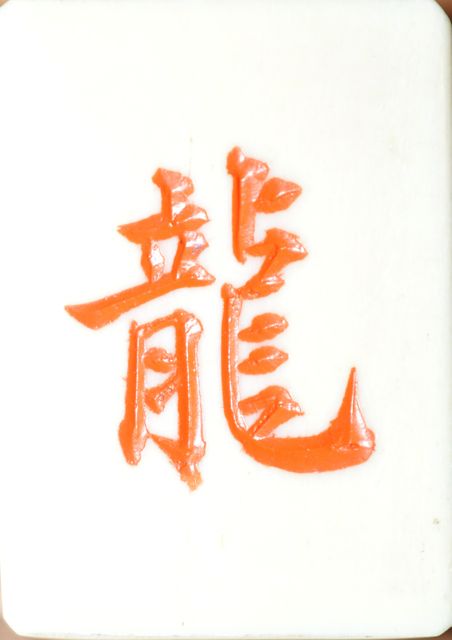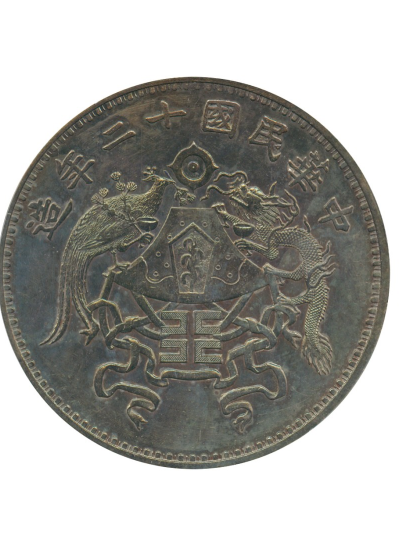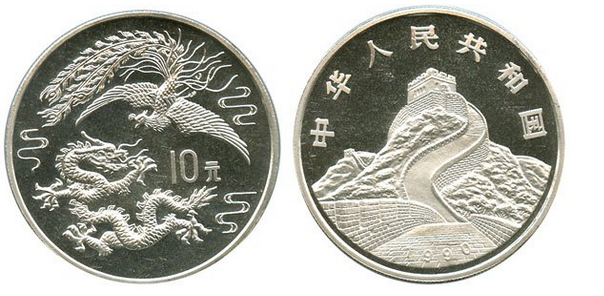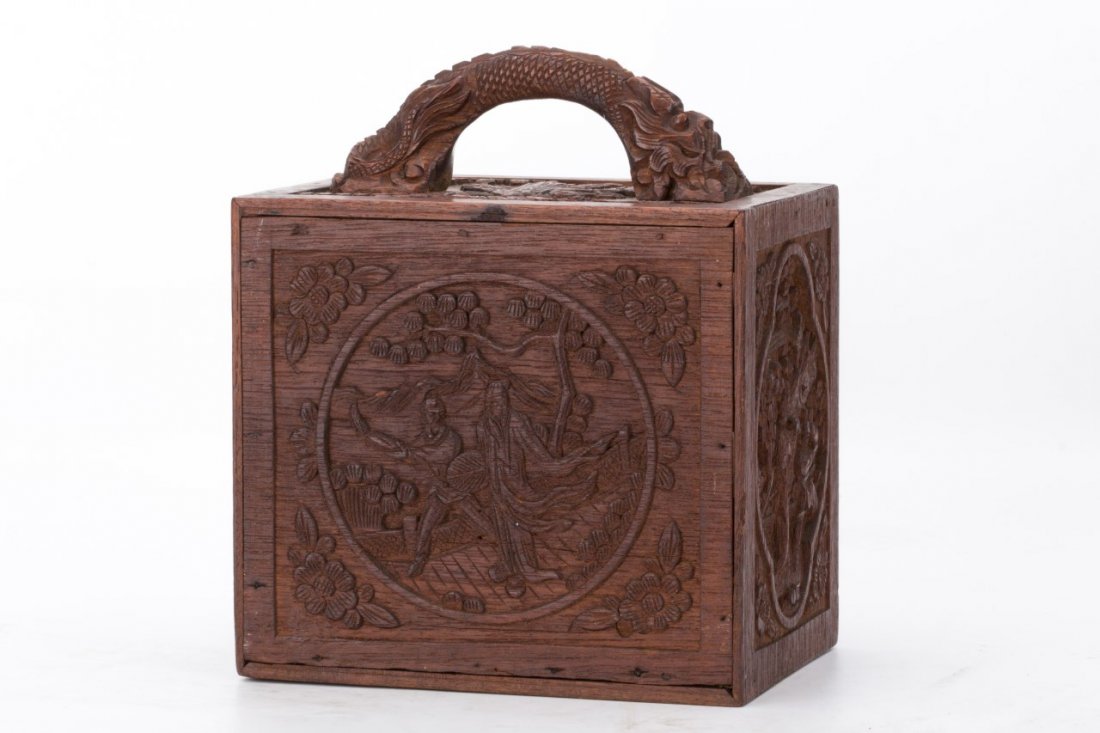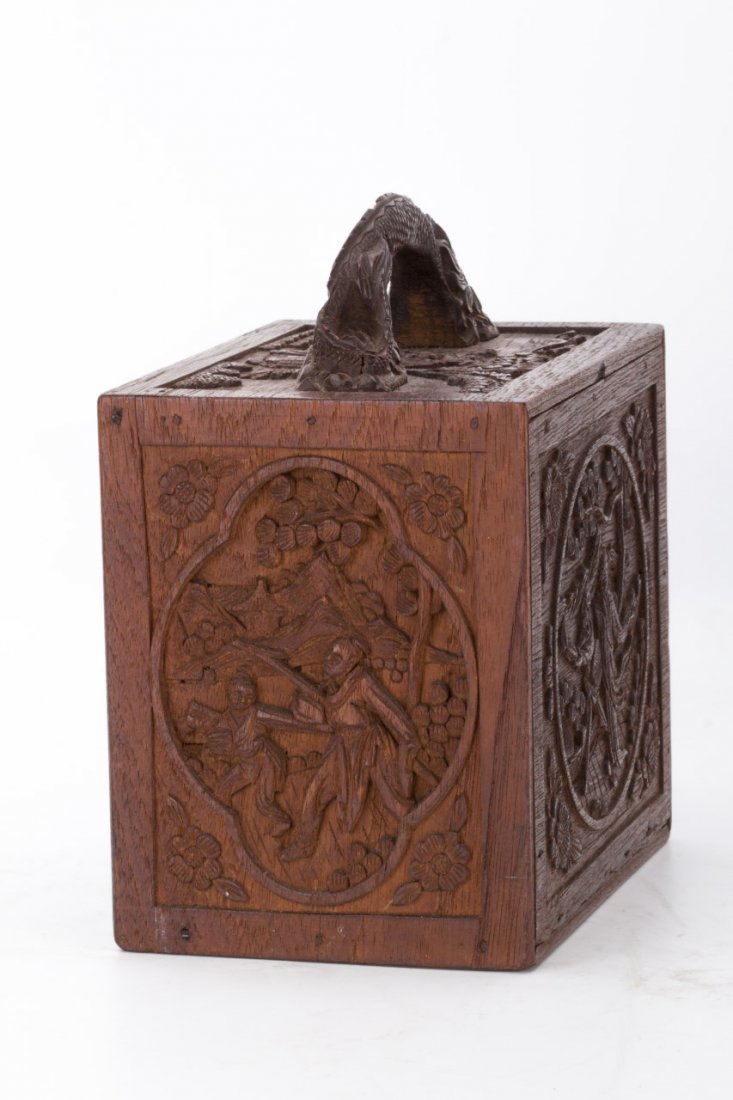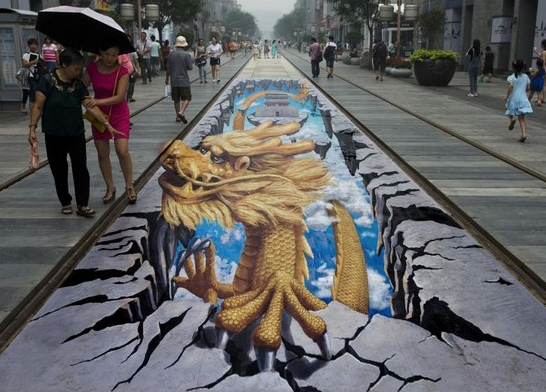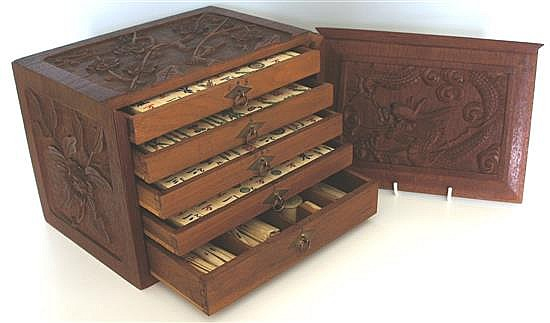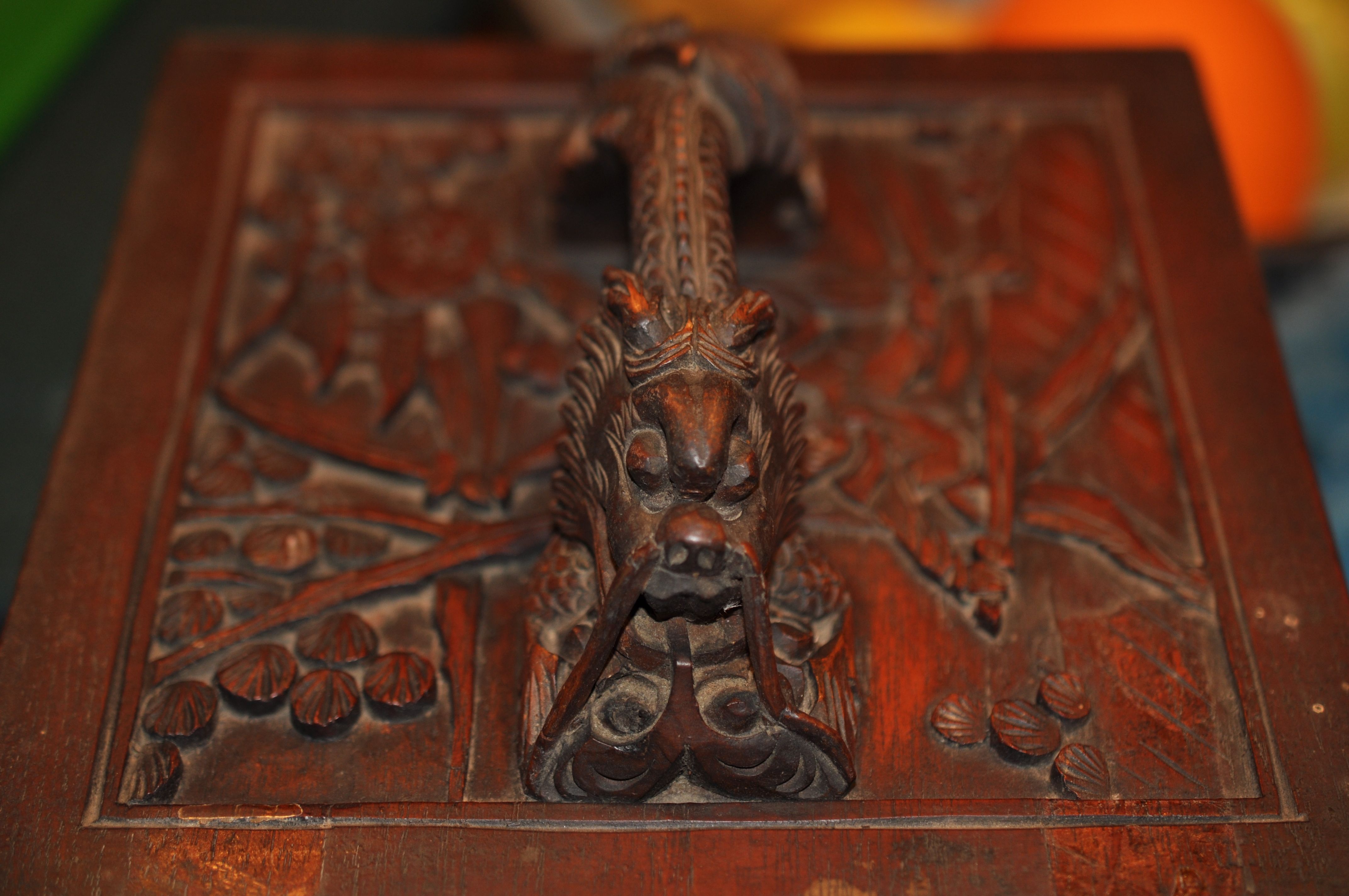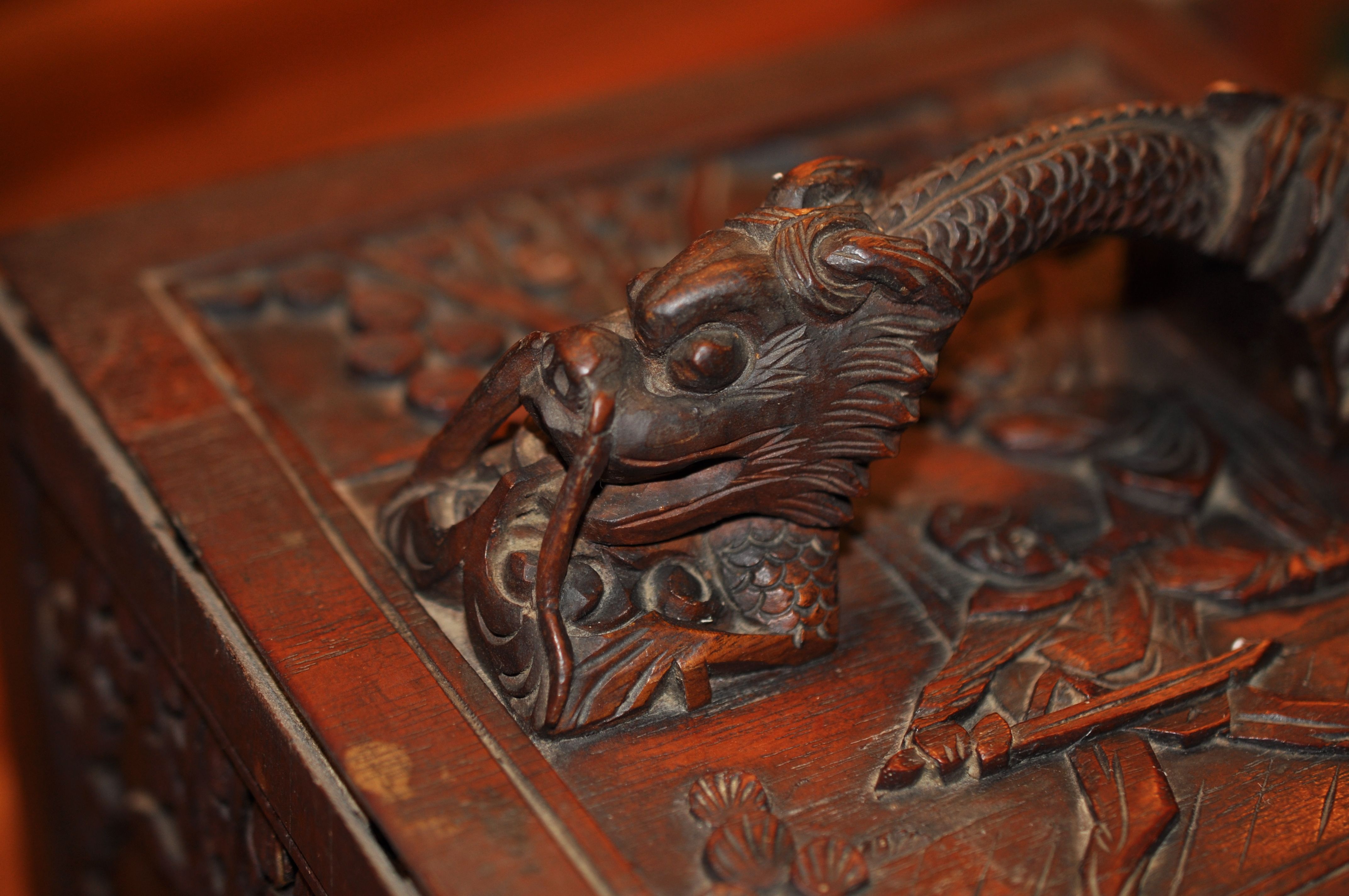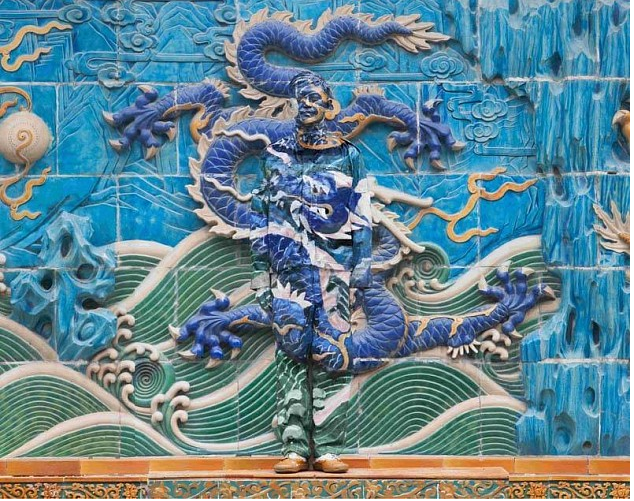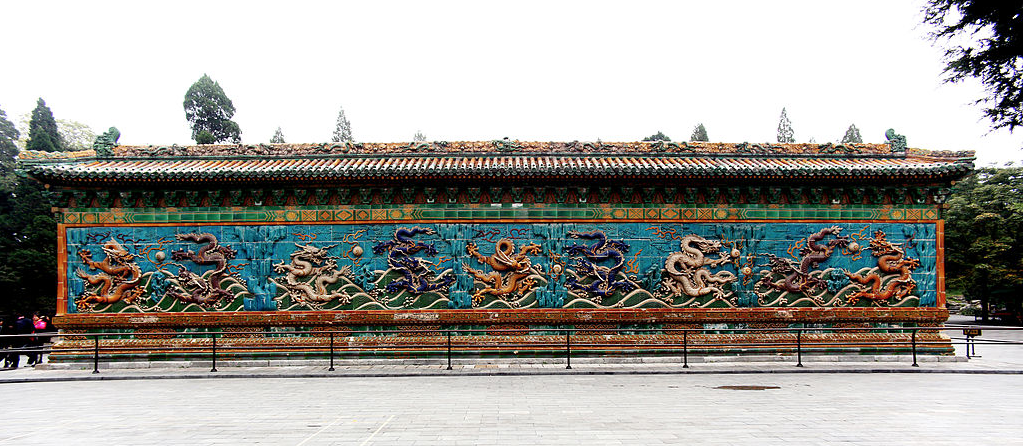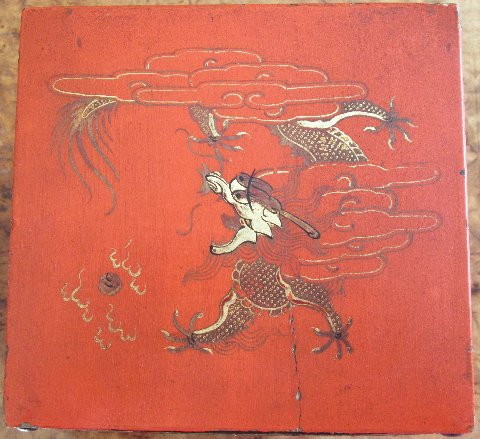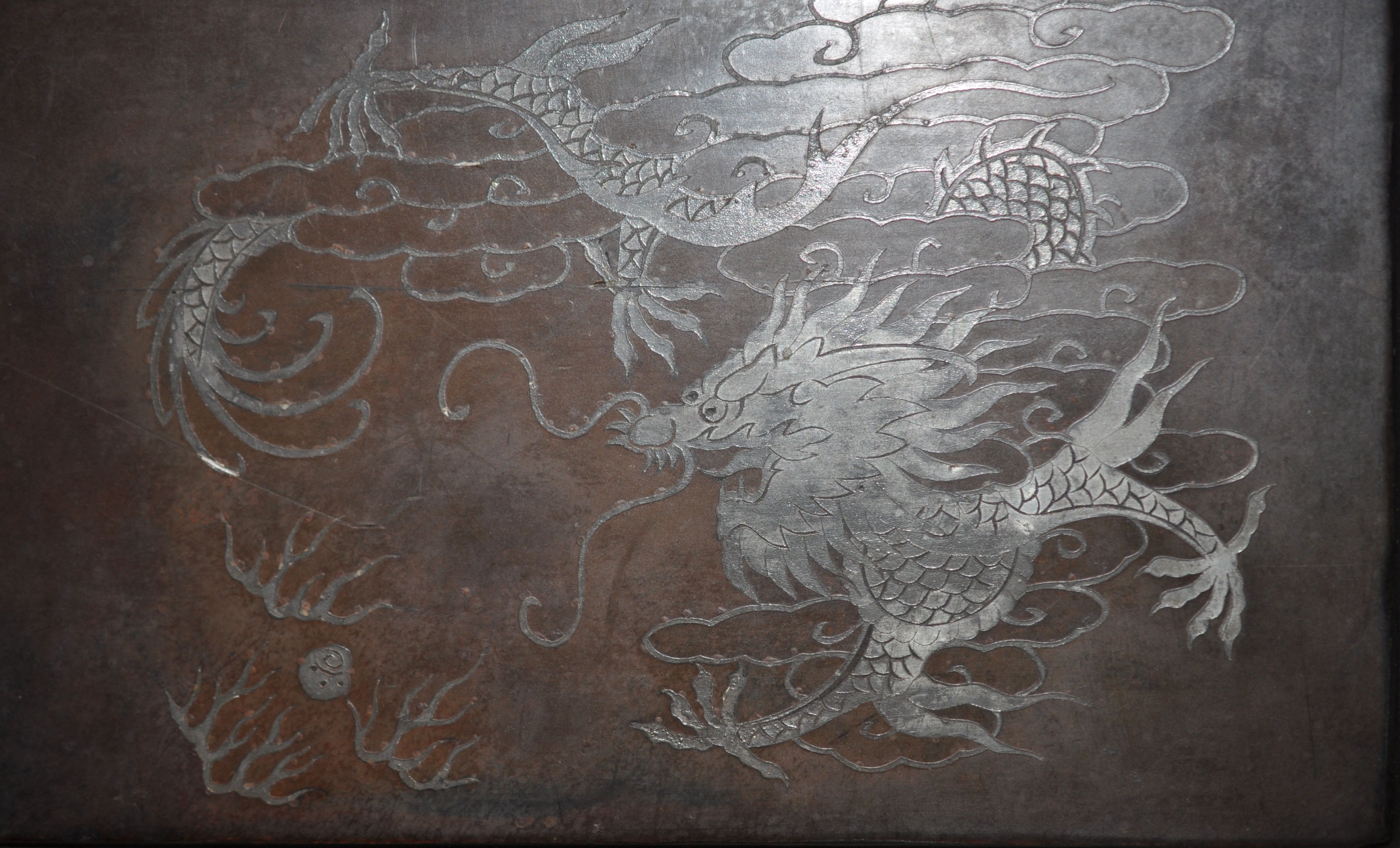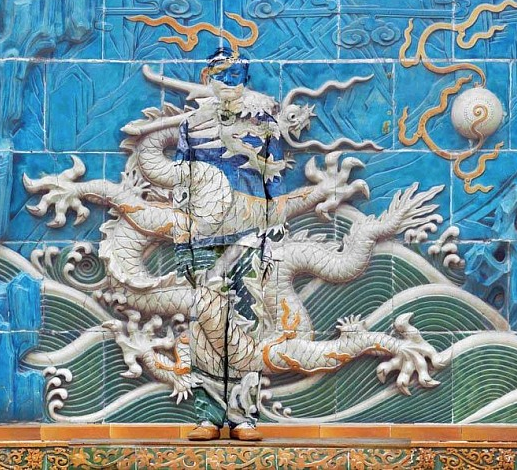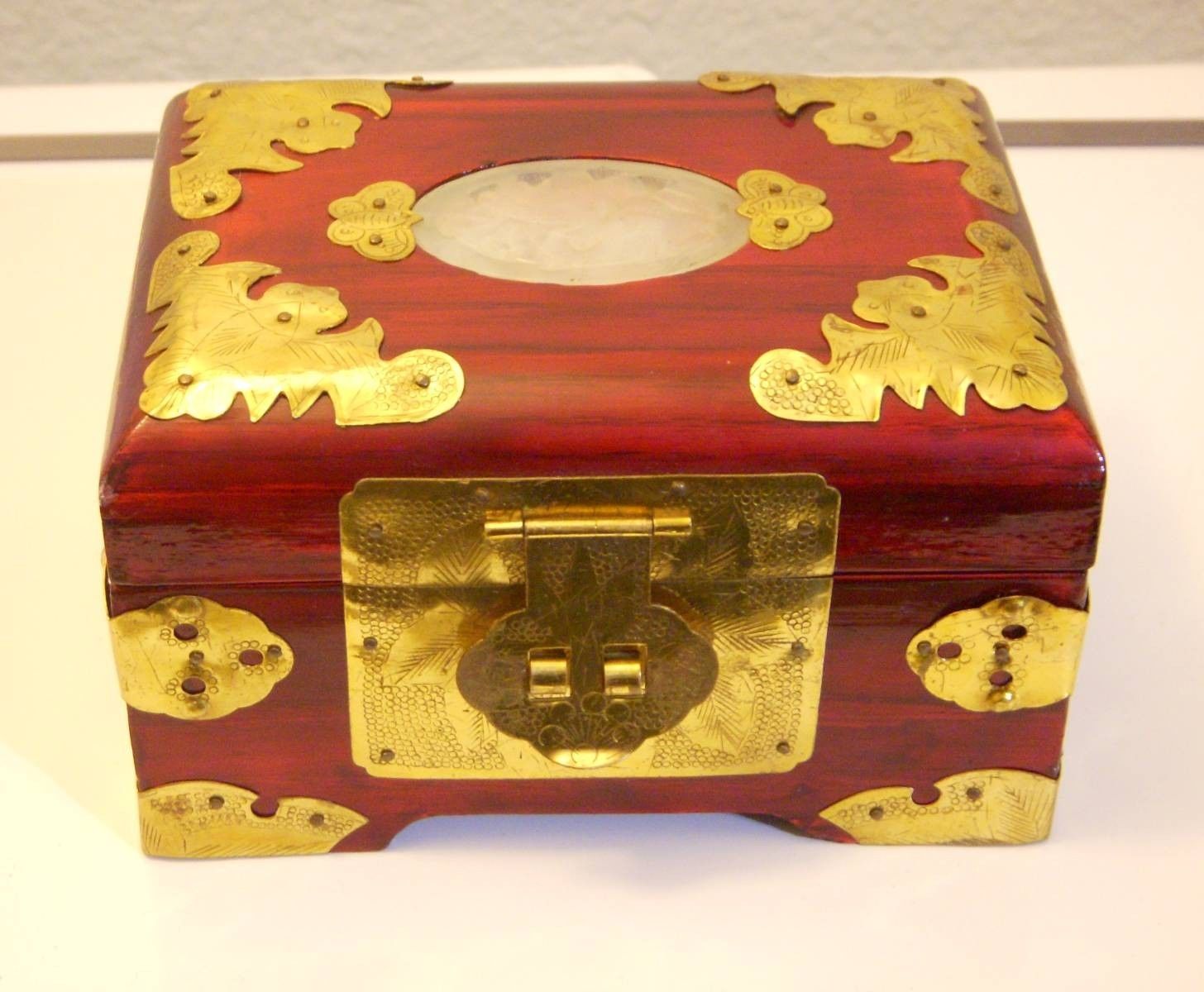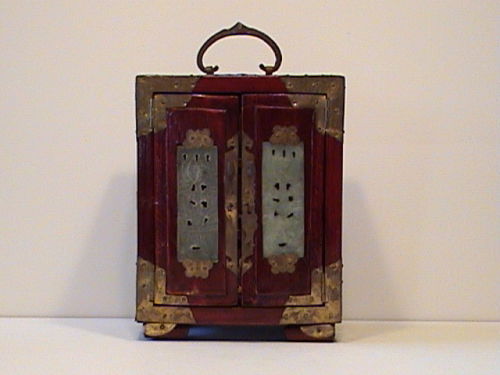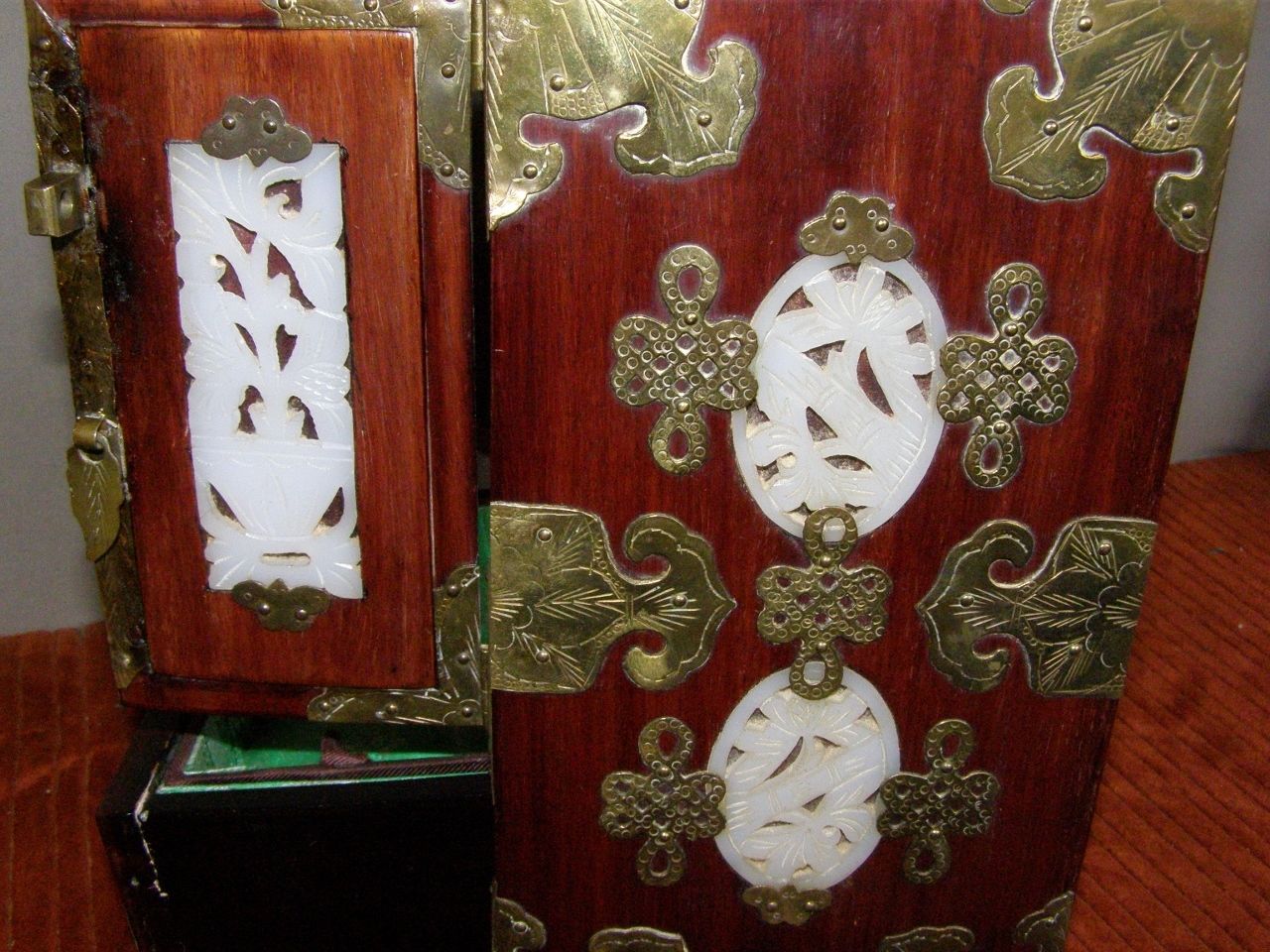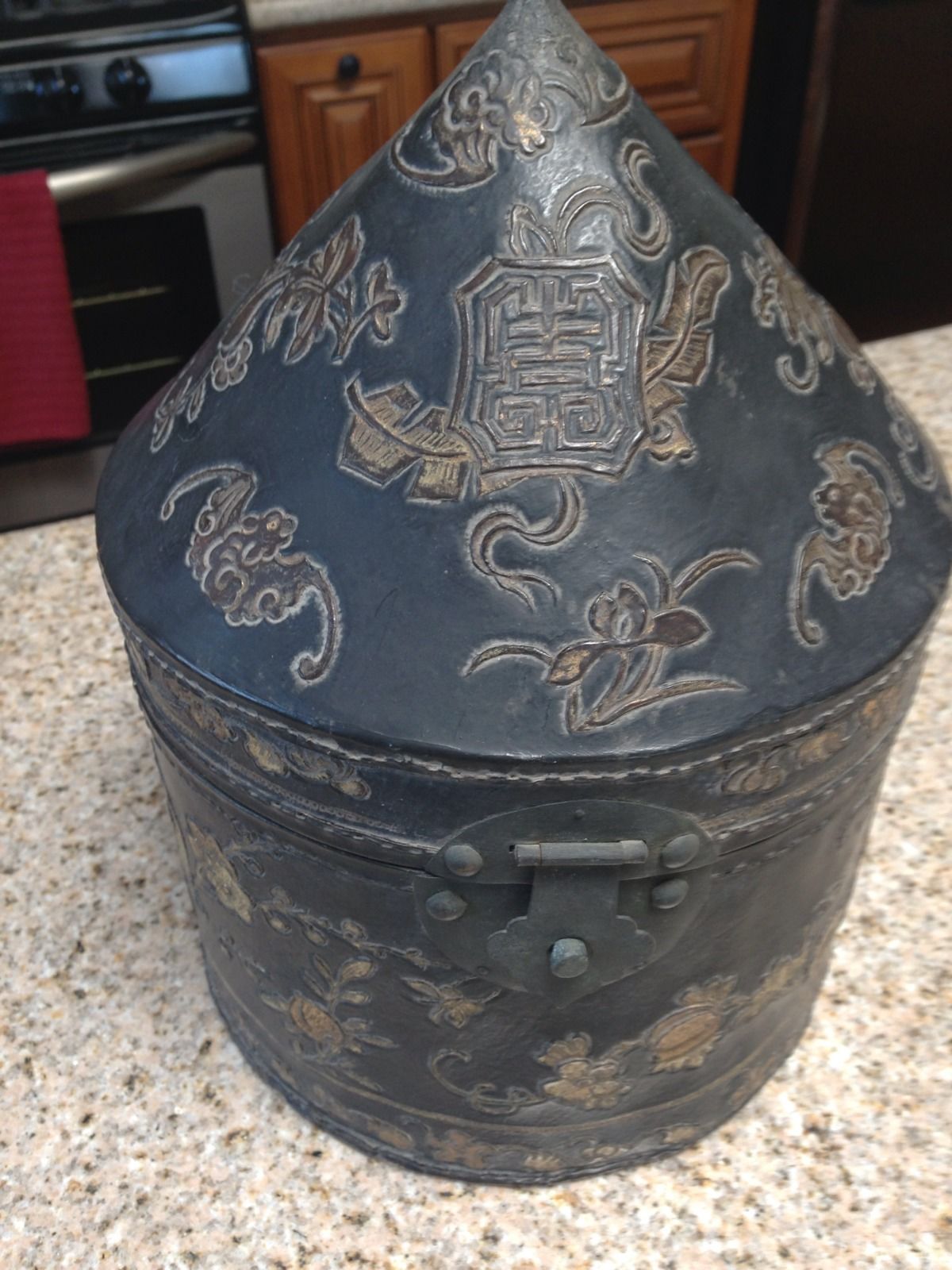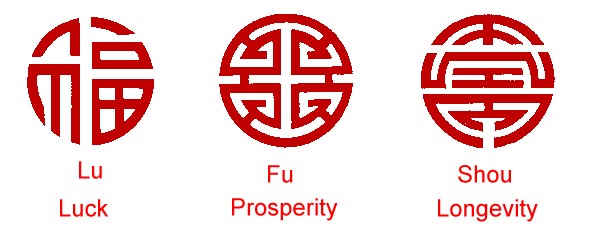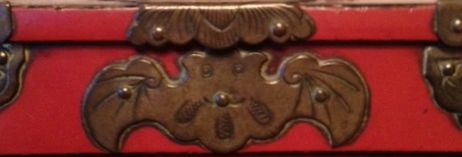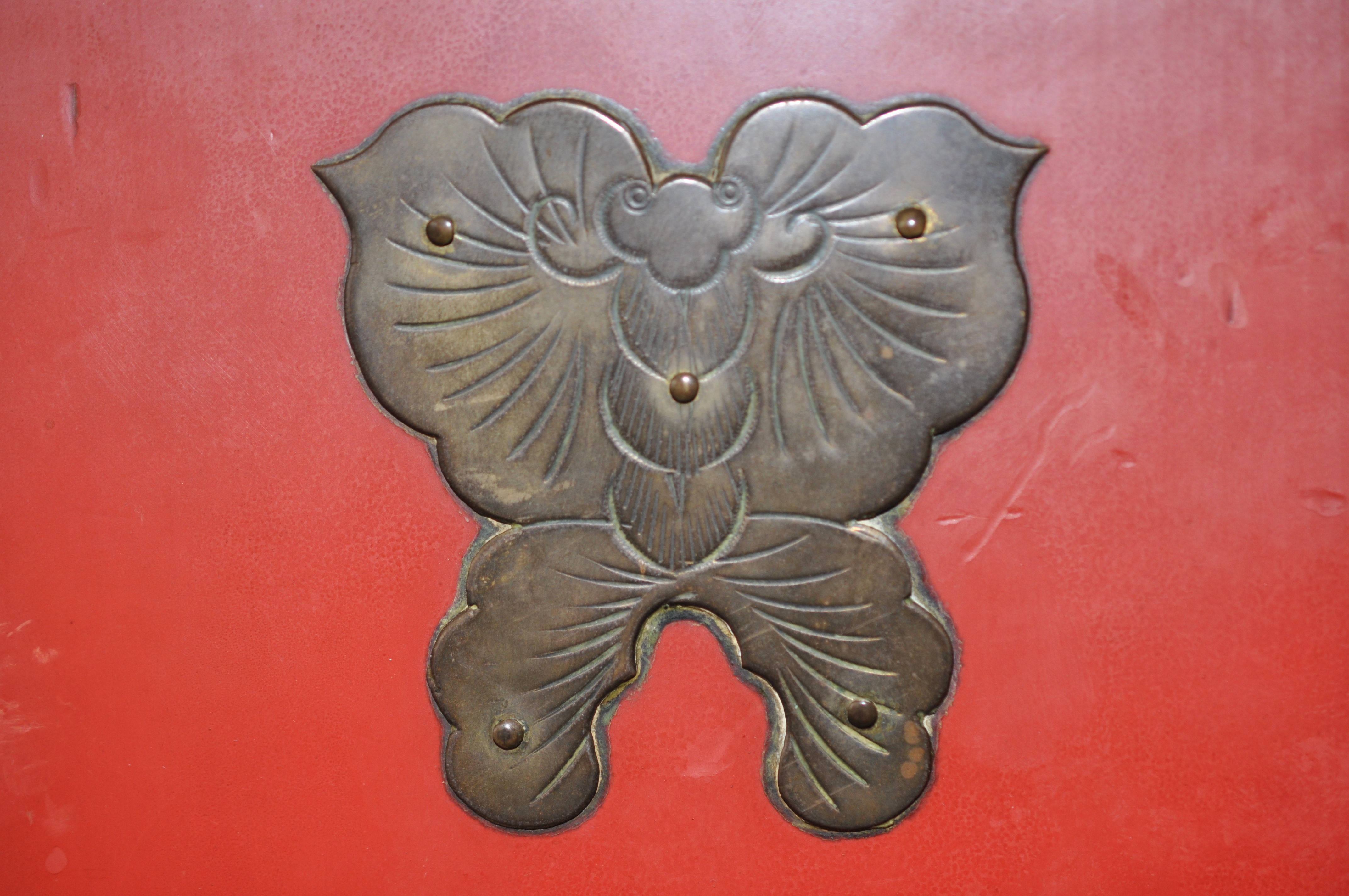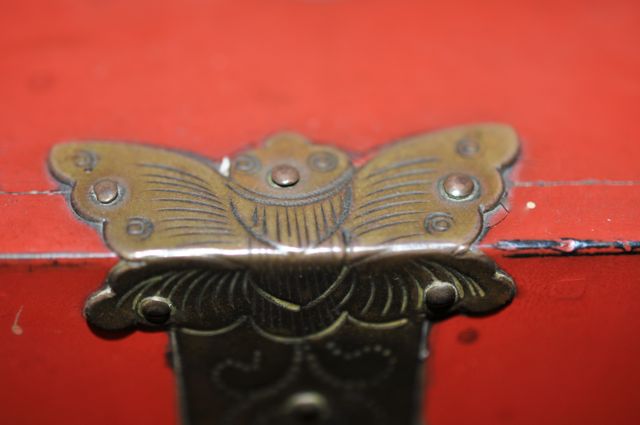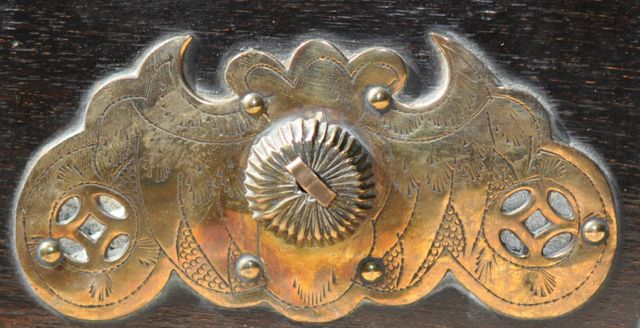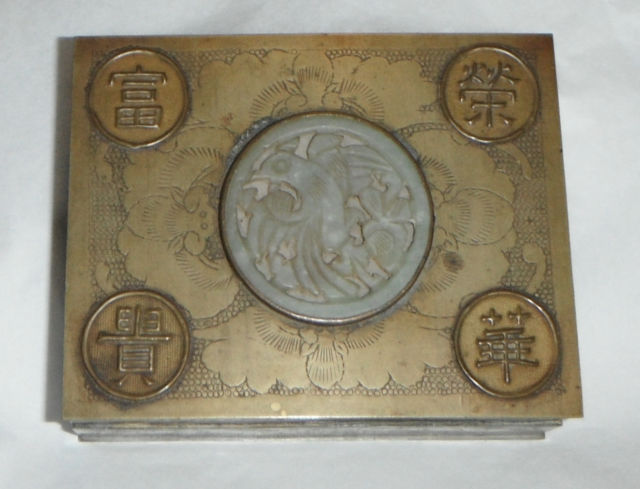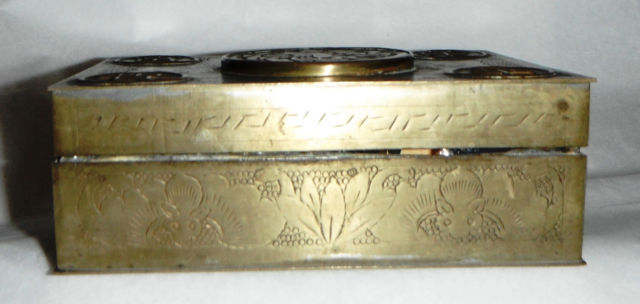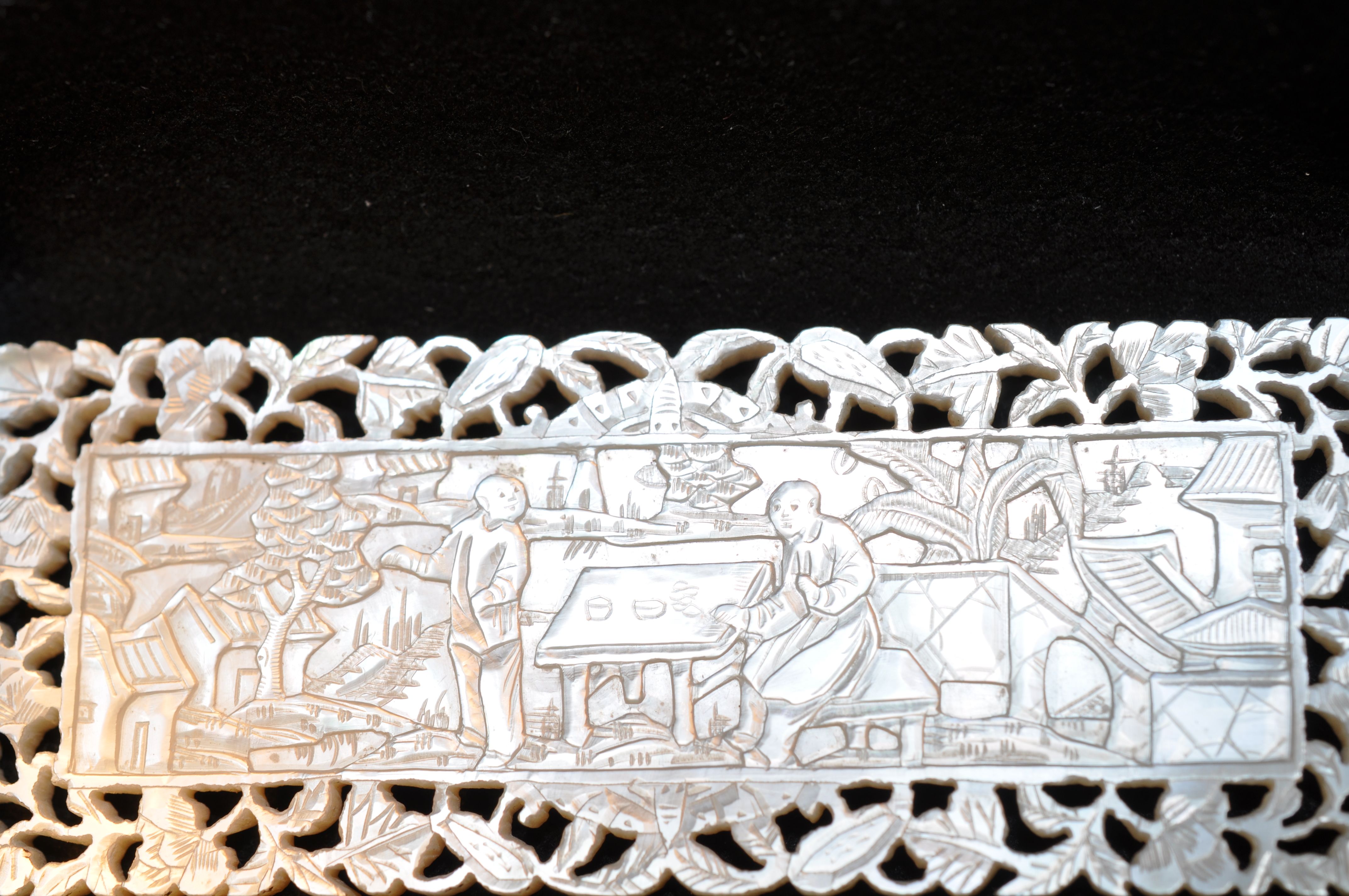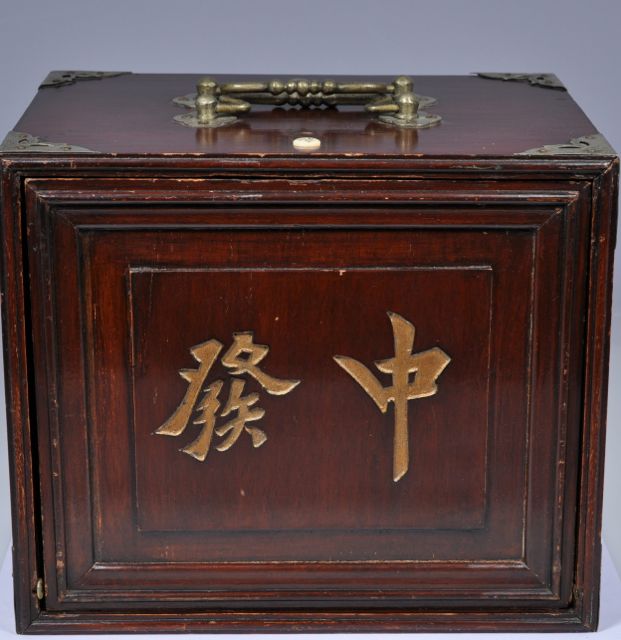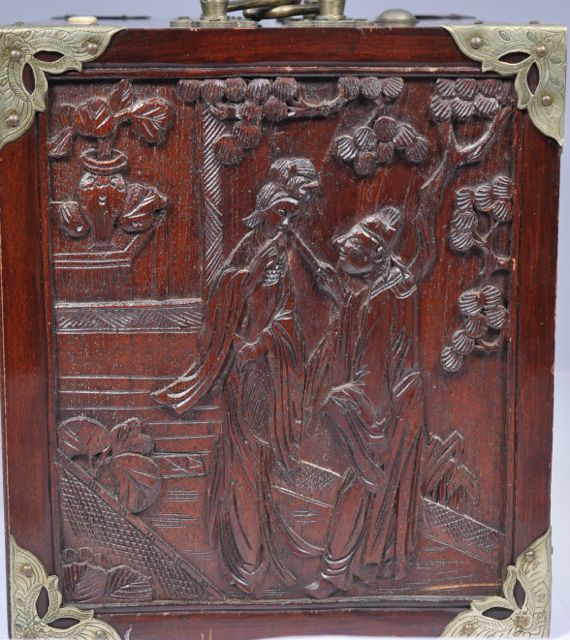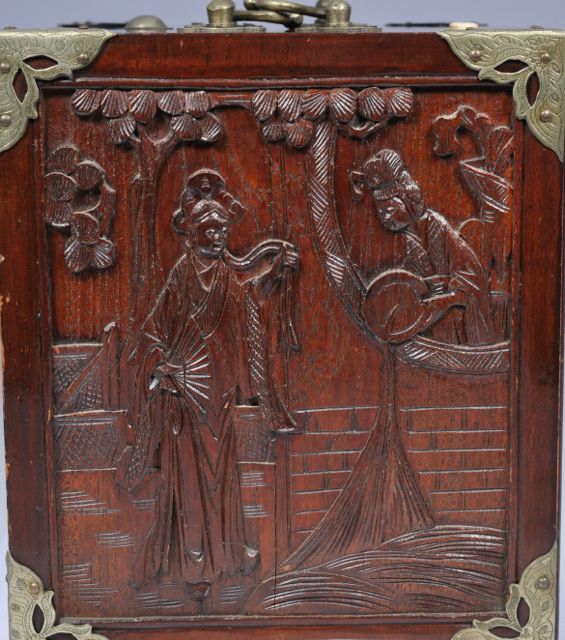
I think many of us will have to agree this is one of the most delightful dragon Mahjong boxes we have ever seen. * Instead of having just a deeply carved dragon on the lid, or a beautiful handle, the beautiful handle has become a three dimensional dragon, a piece of sculpture posed on top of the box. Look at the attention paid to him, the mouth with its teeth (tho not too big to be intimidating!), his nose and whiskers, his backward facing horns, his "chops" along the side of his face, five toed detailed claws, and curled tail encircling the back of his body. How fabulous is he? Surrounding him, on the border of the box, are flower petals and bats.
Interestingly on this Mahjong box, it really is all about dragons, unlike some of the other carved boxes we have seen where they simply put in an appearance and go away.

Here's the inside of the box where we see two dragons. If the dragon on the lid looks somewhat friendly, these guys are almost smiling! They are surrounding a circle (the sun?), and the shou symbol, right below it, representing longevity. In Patricia Bjaaland Welch's book Chinese Art A Guide to Visual Motifs and Visual Imagery, the round version of the shou that we see above may mean a wish that a person live his full life span and die a natural death. We also see the four bats above and below the disk, and an endless knot, a Buddhist symbol, just behind each dragon's tail. Each knot represents a long life, uninterrupted by set-backs. (Wolfram Eberhard A Dictionary of Chinese Symbols)

On the above photograph of the box and its Mahjong tiles, if you look carefully you can see there are dragons along the side of the box. The box is the home of a much-sought after Chinese Bakelite set. The tiles have green wafer backs which you can see in the photo. What is so exciting about this particular set, especially in terms of this post, is the One Bam and the One Dot.
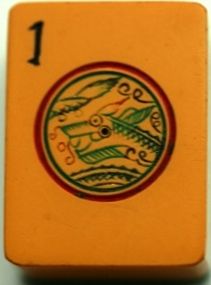
This is no ordinary Mahjong One Dot. Instead of being a version of flower or circles, we have a dragon! You can clearly see the dragon's head, his nostrils and backward facing horns. Other parts of his body are seen in the top of the tile, where they resemble mountains, and right below where it resembles a wave, and the rest of his body is hidden either by clouds or water.
And here is the One Bam:
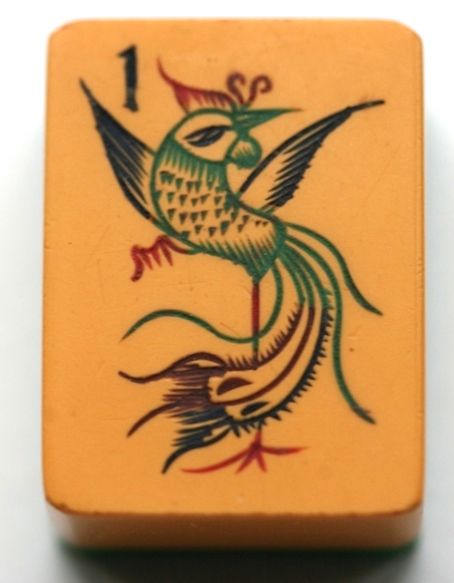
A phoenix! How divine is that! We have a real, fully dragon box housing a Mahjong set with both dragon and phoenix tiles! And the pairing of these two creatures is what we will be covering soon.
We thank Bill Price for sending these photos of his fabulous set to us, allowing us all to enjoy it.
* As many of you know, oftentimes boxes were not made for mahjong sets; rather boxes were appropriated from those often used for jewelry (some of the five drawer versions, or ones with two large opening doors) or in this case a small fully carved box.
The book I wrote with Ann Israel is being published by Tuttle. To see more about it:
www.mahjonggtheartof thegame.com
To order it click here:
http://www.barnesandnoble.com/w/mah-jongg-ann-israel/1118759459?ean=9784805313237
or here from Amazon
http://www.amazon.com/Mah-Jongg-Collectors-Guide-Tiles/dp/4805313234/ref=sr_1_7?ie=UTF8&qid=1414844427&sr=8-7&keywords=mah+jongg

